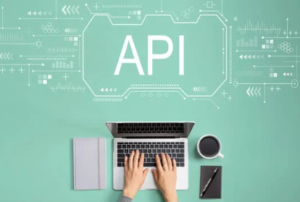Table of Contents
Harnessing the power of APIs will vastly benefit your organization and allow for seamless data integration. This will help business leaders make more data-driven decisions that will power up the business’s growth and revenues.
What is a Job API?

Jobs board data API (application programming interface) is a set of links and services that allows companies and industries to access and retrieve or collect various job listings. Basically, the purpose of an API is to allow one organization to use the data and codes powered by another organization.
With job APIs, companies can leverage other companies’ data about job availability, industries looking to hire, and top skills in demand according to job postings.
The Job API data overview
There are three main categories we choose to split job API data into. They are classified based on time, geography, and a given profession.
- Time Series of Job Postings. This category includes all data with time factors; this includes the number of job postings per day, month, and year, the total number of companies making job postings, how long job postings stay up, and other specifics about company internship duration.
- Geography of Job Postings. Data about companies who are posting jobs with a specified region, whether it is in-office or remote work, does the company have several offices with the ability to choose your own location, how often you have to show up in the office, whether you will have to travel often, etc.
- Skills Data. A category of data that includes hard and soft skills associated with a given career, career goals, specific credentials, and years of experience.
How to leverage APIs more efficiently?

Job API is a fantastic tool for many companies and industries. In fact, according to Slashdata, nearly 90% of developers are using APIs in some range. But just like with any other tool, it’s important that organizations learn to leverage it to its full potential. Here are some of the ways to use APIs to their full potential:
- An API strategy should correspond to the organization’s needs and goals, which means you should build or purchase APIs until you really need the data from them.
- The role of an API is to connect servers for them to share data. That’s why it’s important to consider security so that no other information rather than data gets shared.
- Figure out and prioritize the best return on investment in APIs. Too many API datasets can make it difficult to keep an overview.
The main advantages of using jobs API

APIs play a vital role in both augmenting existing business job listing models and empowering completely new, entirely serene, and digital ones. Here are five considerable benefits of introducing an API in your company:
1. Efficient and affordable job data
A recent survey shows83% of all internet traffic belongs to API-based services. Fundamentally, 83% of all traffic contains much of the needed job data. Meaning that instead of producing new job data, developers can focus on implementing new strategies and resources for business.
2. Better user journey
With access to a job API, developers can analyze what job postings are successful and what marketing strategies are implemented in those postings. When creating new job postings, there will be no need for trial and error runs. Data insights will allow you to create superior postings on the first try.
3. Defined focus on new features
API-driven businesses can bind their focus to only new features and strategies. They won’t have to develop strategies that others have already produced. Even statistics show that 56% of developers claim that APIs help them develop better products, accelerate innovations, integrate systems, and create business value.
4. Data accessibility
While job API data opens new insights for big businesses, it opens a ton of new possibilities for new or small businesses. Small businesses that don’t have enough resources to collect any substantial data can enter a whole new world of data and insights just with the help of API data.
5. Erase boundaries
With the help of APIs, boundaries between organizations have become more fluid. Instead of each organization having its own datasets, they are now shared, and organizations can accumulate however many datasets they want. It’s the huge difference between how many data insights you can draw out of one dataset and how many more and better insights you can draw out of 10 distinct datasets.
Conclusion
To sum it up, APIs are here to stay. They have become a foundational component of seamless integration. It’s important that companies and industries invest in this tool to keep up with the pace of data production and save substantial time on data collection.
Author Profile

- Guest Blogger & Outreach Expert - Interested in Writing Blogs, Articles in Business Niche | News Journalist By Profession in the United Kingdom
Latest entries
 BusinessNovember 21, 2025A Practical Guide to Using LMS Platforms for Better Onboarding
BusinessNovember 21, 2025A Practical Guide to Using LMS Platforms for Better Onboarding EducationNovember 17, 2025Choosing the Right AI Course for Your Child: A Parent’s Guide
EducationNovember 17, 2025Choosing the Right AI Course for Your Child: A Parent’s Guide FinanceSeptember 19, 20257 Paid Advertising Mistakes That Drain Your Marketing Budget
FinanceSeptember 19, 20257 Paid Advertising Mistakes That Drain Your Marketing Budget BusinessAugust 22, 2025How Recycled Polythene Helps Businesses Exceed Sustainability Targets?
BusinessAugust 22, 2025How Recycled Polythene Helps Businesses Exceed Sustainability Targets?





